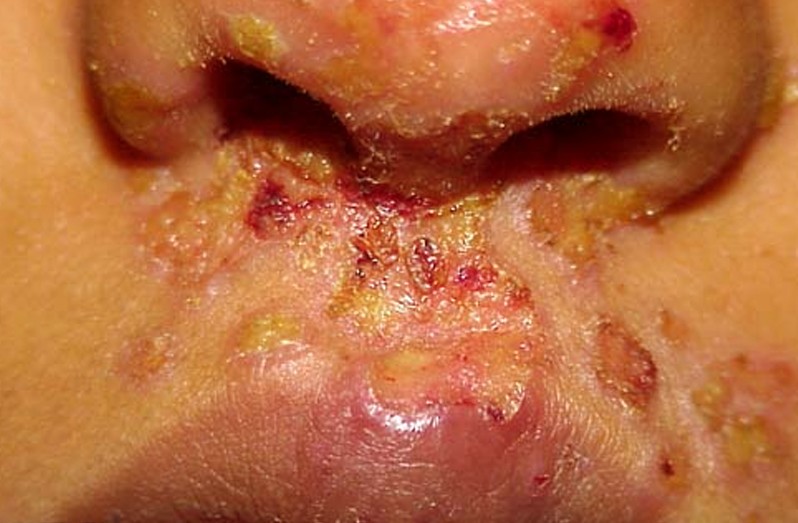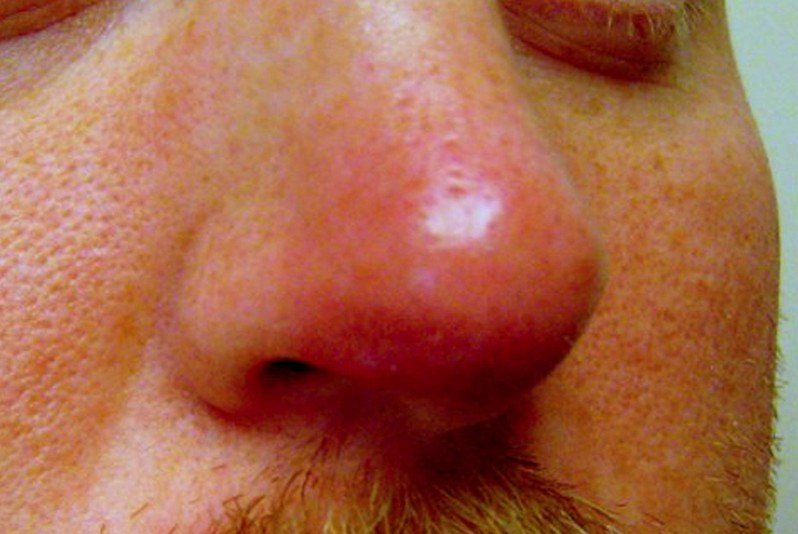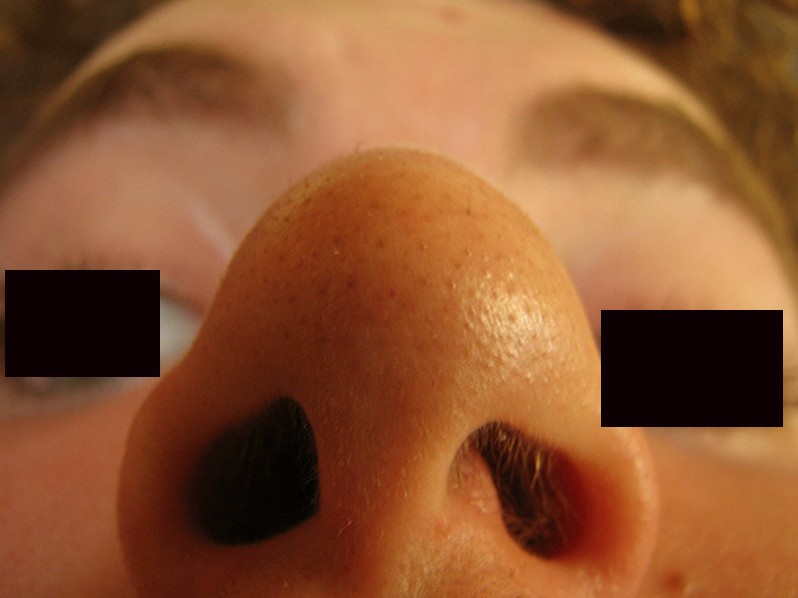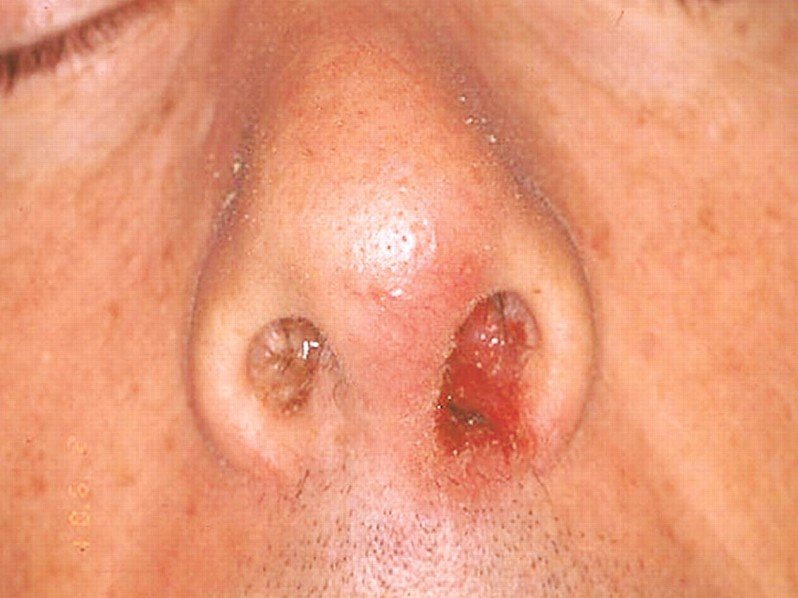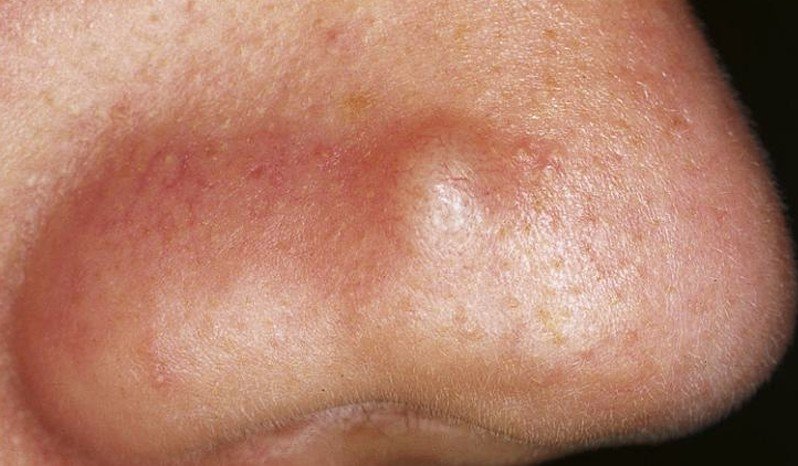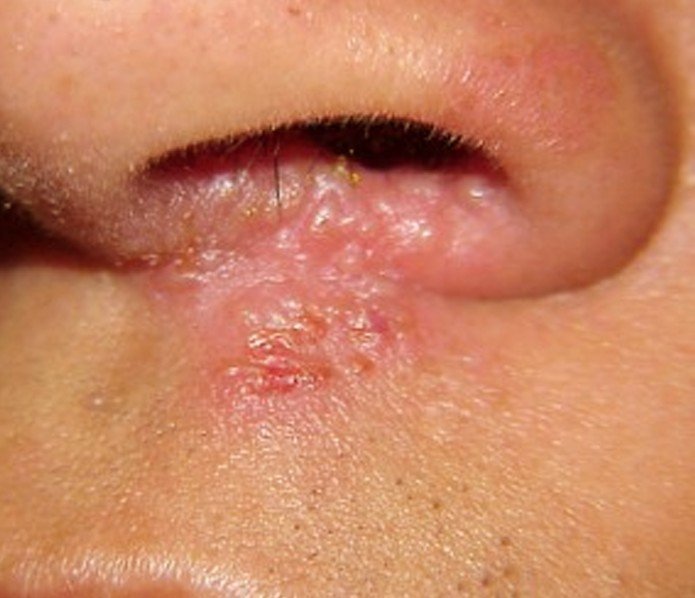Staph Infection in Nose
Staph infection is an infection from Staphylococcus bacteria that usually affect the skin particularly the nose or the inside of the nose.
Staphylococcus aureus is the bacteria that cause the staph infection. These bacteria are normally found in the skin especially in the inside of the nose. Even healthy and active individuals carry staphylococcus aureus in their skin. Staphylococcus aureus however does not immediately cause an infection even if it is in colony. The uncontrollable proliferation thus results to the onset of infection although it is often minor. Staph infection is usually not a life-threatening or serious condition and is usually minor when it occurs. The problem generally is when the infection went deeper into the body and has invaded the bloodstream, vital organs, bones and joints of the body. The invasion of the bacteria deeper into the body may lead to a serious complication or it can be fatal.
Staphylococcus bacteria are composed of 30 different strains and are normally found in the skin of healthy people. The appearance of staphylococcus is similar to a bunch of grapes when viewed under the microscope. Staphylococcus is bacteria that exist as a normal flora in the skin and nose even in the skin and nose of healthy individuals. The bacteria of staphylococcus can survive in extreme heat and dry environments and can also survive exposure in salt. It is found to be present in almost 30% of adult individuals who carry the bacteria in their nose. Staph infection may cause disease as a result of direct infection or may be due to the production of toxins from the strain of the bacteria.
Symptoms
The colonization of staphylococcus aureus in the nose often does not lead to an active infection and manifestation of a localized symptom. The infection is usually secondary to cough and colds, flu, inflammation and trauma in the nasal membrane that results to an open wound or cut in the skin where the bacteria can gain an entry into the body.
The incidence of staph infection in nose is usually minor and the symptom is local or may manifest in distant skin.
Local symptoms of staph infection in nose include the following:
- Inflammation of the nostrils
- Production of yellow or green mucus
- Nasal congestion and discharge
- Onset of fever
- Cough
- Sensation of pain in the nasal membranes
- Chills
- Sinus headache
Distant skin symptoms may also occur and which include the following:
- Boils which is a collection of pus that usually develops in the oil gland or in the hair follicle. The onset is characterized by swelling and redness of the infected area. It is usually found in skin areas under the arm, buttocks and around the groin.
- Impetigo is characterized by painful rash that often develops in the skin near the mouth and nose. The rash is more of vesicular pustules, honey colored and with thin wall.
- Cellulitis causes redness and swelling on the surface of the skin. It is also characterized by the development of sores or skin ulcer that may have an oozing discharge. Cellulitis is often found in the feet and the lower legs.
- Pimples may also develop and usually in the face, neck, inside of the nose, upper chest and back. The pimples may also develop into a cluster which is then known as carbuncles.
Staph infection is usually minor and non-life threatening. There are cases however where the bacteria has invaded the blood stream that will later circulate in the body. When this happen, vital organs, bones and joints can get infected which is potentially fatal. When the symptoms of invasive disease occur, it is high time to immediately bring the patient to the hospital for emergency treatment.
Invasive disease symptoms of staph infection include the following:
- Scalded skin syndrome results from the toxins produced by staph infection. This syndrome is common in newborn and children and is characterized by the development of rash or blisters and onset of fever.
- Bacteremia is potentially fatal and occurs when the bacteria have reached the bloodstream and later infecting the other parts of the body including the vital organs. Bacteremia is manifested by the onset of fever and low blood pressure.
- Septic arthritis is a disease caused by staph infection. The infection usually involves the knees but may also affect the spine, shoulder, wrist, hip and ankle. The signs and symptoms of septic arthritis include the onset of fever, severe pain in the affected joint and swelling of the joint.
- Other invasive disease symptoms include endocarditis, meningitis, osteomyelitis, toxic shock syndrome, otitis media and sepsis.
Causes
Staph infection in nose is caused by staphylococcus bacteria. These staphylococcus bacteria is a group of bacteria composed of about 30 different strains and can cause massive amount of diseases in humans. Staphylococcus is named after its appearance which is similar to a cluster of grapes. The bacteria are generally present in the skin as normal flora and can also be found in the inside of the nose.
Staph infection in nose is caused by Staphylococcus aureus which is a strain of staphylococcus that commonly causes the infection. The infection is caused by the bacteria being carried by humans in their skin. The presence of staph in the skin usually does not cause the infection but is rather secondary to the onset of colds, flu, cough, inflammation and trauma to the nasal membranes.
Treatment
Staph infection can be treated and the goal of treatment is to control the infection to prevent invasion in the bloodstream and vital organs of the body. It is important that infection be treated early and properly to prevent life-threatening complications.
The treatment for staph infection in nose includes the following:
Antibiotic is the treatment of choice for staph infection in nose. The initial step in antibiotic therapy to staph infection is identification of the strain of the bacteria that caused the infection. The usual antibiotic prescribed is cephalosporins, vancomycin, nafcilin and sulfa drugs. Intravenous antibiotic is given to more serious or life-threatening staph infection.
Is it Contagious?
Staph infection in nose is highly contagious and which can be transmitted from one person to another. Staphylococcus bacteria can survive extreme temperature, dry environment and even exposure to salt. The bacteria can survive outside their host and can survive in inanimate objects such as handkerchief, pillowcases and towels. The bacteria can be transmitted with sharing or using of objects used or previously touched by a contaminated person. The infection can also originate from the carrier person when the bacteria are triggered.
Staph Infection in Nose Pictures
Collection of photos, images and pictures of Staph Infection in Nose…
